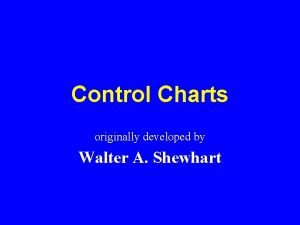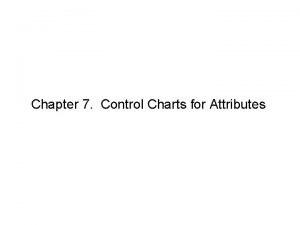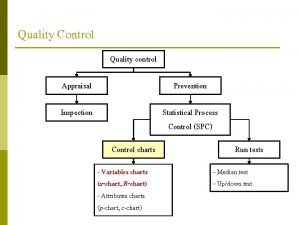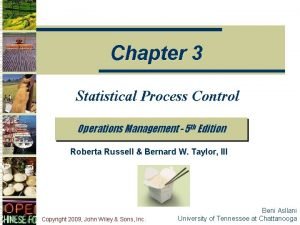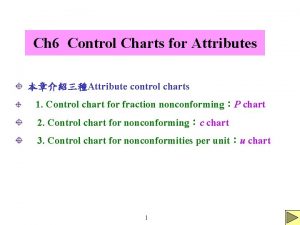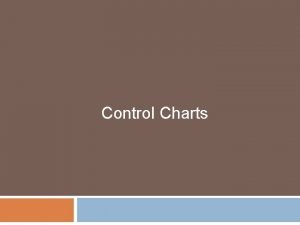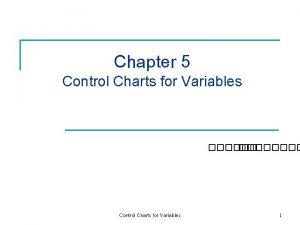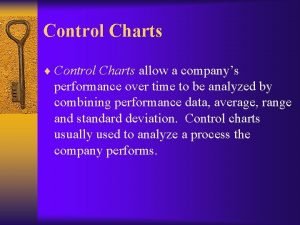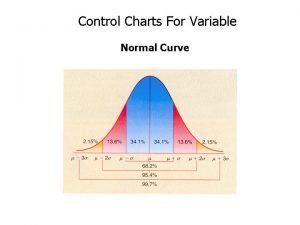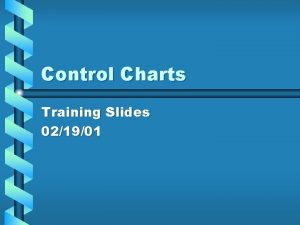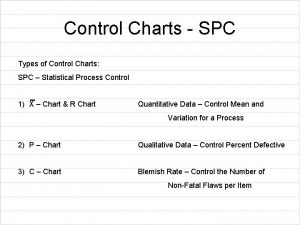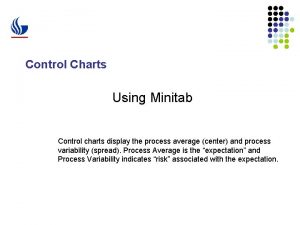Control charts How to make one Example Control

















- Slides: 17

Control charts How to make one? Example Control charts for method of analysis of total organic carbon (TOC) – X chart SUBJECT: QUALITY ASSURANCE IN THE LABORATORY FOR THE ENVIRONMENTAL ANALYSIS Dr Aleksandra Tubić, associate professor University of Novi Sad, Faculty of Sciences Trg Dositeja Obradovića 3, 21000 Novi Sad This project has been funded with support from the European Commission. This publication reflects the views only of the authors, and the Commission cannot be held responsible for any use which may be made of the information contained therein.

X - charts LABORATORY CONTROL STANDARD CALIBRATION VERIFICATION STANDARD 11. 50 11. 00 Measured value, mg C/l Izmerena vrednost mg/l Expected value, mg C/l 10. 50 Očekivana vrednost, CL Central line 10. 00 UCL/LCL, mg C/l GGA UWL/LWL, mg C/l GGU 9. 50 9. 00 8. 50 1 3 5 7 9 11 13 15 17 19 21 23 25 27 29 31 33 35 37 39 41 43 45 47 49 51 53 55 57 59 61 63 65 67 69 71 73 75

Make an excel sheet with: 1. the table with data for the statistical calculations and 2. the table which will be used to fill the control chart

Enter: • date of measurement • measured values

Calculate averege value of measured values (column C) Xaverage: fx =AVERAGE (C 10: C 20)

Calculate standard deviation of measured values RSD = SD: (J 11/J 0)*100 fx =STDEV(C 10: C 20)

RSD = (SD/Xaverage)*100 Calculate relative standard deviation of measured values

Set central line as the value as expected value based on known concentration of LCS

BIAS =100*(Xaverage/CL)/CL Calculate BIAS

UWL = CL+2 SD Calculate UWL

LWL = CL-2 SD Calculate LWL

UAL = CL+3 SD Calculate UAL

LAL = CL-3 SD Calculate LAL

Transfer CL, UWL, LWL, UAL and LAL values to the columns in the table

Copy the CL, UWL, LWL, UAL and LAL values to the columns for drawing the X chart

Draw X chart for the LCS

Now you can enter the obtained values for blank samples to the X chart and fallow the quality of the data obtained
 How to calculate control limits
How to calculate control limits Who developed control chart
Who developed control chart Weco rules for control charts
Weco rules for control charts Defect chart
Defect chart P chart control limits
P chart control limits Control
Control Control charts ppt
Control charts ppt Attribute control charts
Attribute control charts One god one empire one emperor
One god one empire one emperor Little dog run
Little dog run One king one law one faith
One king one law one faith Byzantine definition
Byzantine definition One ford plan
One ford plan See one do one teach one
See one do one teach one One price policy
One price policy Willow cabin speech
Willow cabin speech See one do one teach one
See one do one teach one Asean tourism strategic plan
Asean tourism strategic plan

